
Animals of the Week #2
Last updated: Wednesday July 7th, 2021
Report this blog
Some More Information
The idea of this series is that each week, I will post a blog that educates you about six different animals, one mammal, bird, reptile, amphibian, fish, and invertebrate. This is inspired by my fascination with the zoological world, so I hope to bring the wonders of animals to you. This is the second edition, and I do hope you enjoy it. Let's get started!
Mammal: Fennec Fox
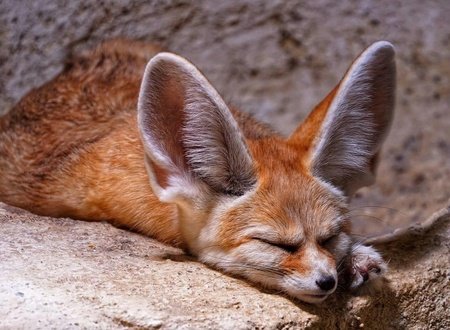
While the fennec fox slumbers, all we can do is marvel at how easily it will win the "Cutest Animal" award. Fennec foxes are the smallest canids (dogs) and their incredibly gigantic ears help them hunt at night in the harsh, arid desert regions of Africa and Arabia. Excellent at camouflaging and capable of enduring long periods without water, fennec foxes are territorial and mark their territory through excrement, while they commonly vocalize in numerous ways.
The skilled foxes prey on insects, specifically locusts and grasshoppers, in addition to lizards, rodents, birds, and eggs, along with roots, fruits, and leaves, to stay hydrated. They are nocturnal and hunt alone, using their unusually large ears to vigilantly listen for prey beneath the sand, and, in spite of their unimpressive size, fennec foxes are quite capable of taking down animals larger than themselves, such as documented cases of the canines taking down fully-grown rabbits. Thankfully, fennec foxes are not in extreme danger like, sadly, many other species, listed as "Least Concern" by the International Union for Conservation of Nature (IUCN), and, living in family groups of up to ten, are sure to dumbfound anyone who sights one in an absolutely endearing way.
Bird: Secretary Bird
Quite odd when you think about it, the secretary bird received its distinct name from Europeans, who are though to have called it a secretary bird due to its uncanny resemblance to male secretaries. In spite of their ability to fly (they are distantly related to raptor birds like buzzards and vultures), they are primarily terrestrial but are proficient fliers and generally settle high up in acacia trees during the night. Widespread across Sub-Saharan Africa, from Senegal to Somalia to South Africa, secretary birds stand over four feet tall on lengthy limbs, preferring short-grass savanna environments with few scattered acacia trees. Along with caracaras, secretary birds are the only birds of prey that hunt on land, feasting on small mammals, reptiles, birds, and large insects, in pairs of small family groups. Like many other wondrous species, scientists still have more to learn about the lives of these distinctive birds, and although protected by several nations in Africa, habitat loss and deforestation threaten the secretary bird and have made it endangered. Hopefully, it will endure.
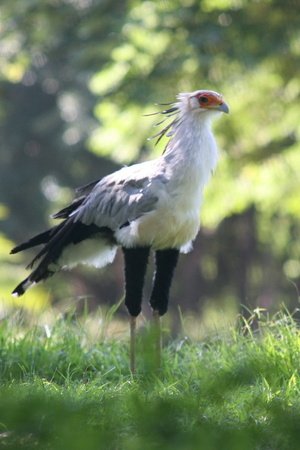
Reptile: Tuatara
Indigenous to only New Zealand and extremely rare, tuataras are fascinating because they are the last surviving members of a reptilian order that flourished during the age of the dinosaurs. Think about that: the current orders of reptiles - crocodilians, lizards and snakes, and turtles and tortoises - have many members, while this uncommon lizard-like creature, with a population of only 60,000-100,000, is the only reptile still in the fourth order, Sphenodontia, which massively declined around 60 million years ago, and now all but the tuatara were wiped out. Growing to 1.6 feet, or half a meter, male tuataras have an idiosyncratic spiny crest stretching down its neck and back, useful for attracting mates and combating other males, and their color can range from olive green to red-orange. Primarily beetles, millipedes, weta, spiders, and worms, but also lizards, seabird eggs and chicks, and even young tuataras, make up their diet. As if it wasn't evident enough already, the tuatara is very threatened and its population is rapidly declining, courtesy of invasive species like rats and mice brought by European settlers, habitat destruction like fires, poaching, and low genetic diversity (causing vulnerability to harmful microbes and low reproductive success). Because of this, the tuatara is now confined to small, isolated islands across New Zealand, but, luckily, steps are being taken to ensure that the unique tuatara endures.
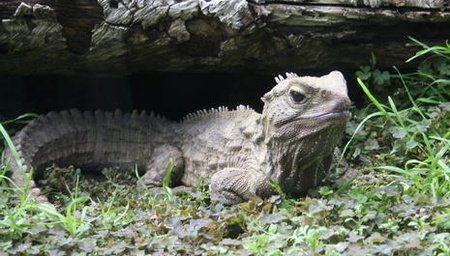
Amphibian: Axolotl
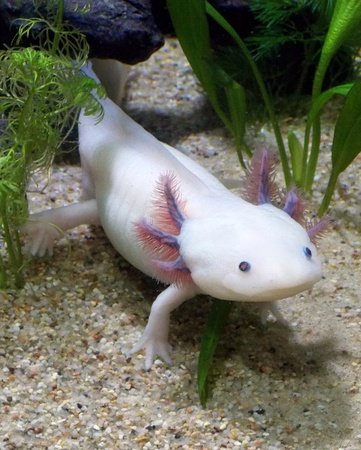
A critically endangered salamander species, axolotls are bizarre in the way that they possess a certain rare characteristic - they retain their larval features, when they were young, throughout their lifetime. This condition, known as neoteny, is responsible for the axolotl's tadpole-esque dorsal fin and strange, feathery external gills that jut out from its broad head. The axolotl is found solely in the lake system of Xochimilco, near Mexico City, and are different from other salamanders, as they live the entirety of their lives in water, and will usually stay at the very bottom of the "lake"; though in some uncommon cases they reach the surface. Growing up to one foot long (but typically half that length), axolotls are black or blotchy brown in coloration, but albino and white varieties are increasingly common in captivity. Axolotls survive for around 15 years on a diet of crustaceans, insect larvae, worms, mollusks, and particular fish, and are used to being the apex predator of their environment, which is why they are vulnerable to introduced fish and predatory herons. Their population continues to decline due to the contamination and draining of Xochimilco, aquarium trade, and consumption by Mexicans, causing them, sadly, to be in extreme danger.
Fish: Arapaima

The sleek, colossal, elongated arapaima, reaching up to a whopping 10 feet (3 meters) in length and 440 pounds (200 kilograms), is the largest fish in the Amazon River Basin and among the largest freshwater fish in the world. Capable of breathing air, arapaimas have huge bony heads and dorsal fins extending along their backs towards their tails, and are native to Brazil, Peru, and Guyana, in the Amazon floodplain. The gargantuan fish's diet consists mainly of fish, although fruit, seeds, insects, birds, and mammals are also a part of it. When hunting, these monstrous arapaimas use a technique in which they create something of a vacuum that sucks all prey into their mouth, utilizing their razor-sharp teeth and bony tongues to shred and pulverize their prey. Unfortunately, excessive overfishing has diminished much of the arapaima's once-prosperous population, and, although their is not enough data for the IUCN to assign them a proper Conservation Status, one thing is clear: the arapaima is slowly disappearing, and as always, we are responsible for it and are the only ones who can prevent it.
Invertebrate: Japanese Spider Crab
That's a crab? Wow. Look at its incredible size - it's unbelievable! Found in the Pacific Ocean around the Japanese archipelago, the largest living known arthropods (insects, arachnids, myriapods, crustaceans), Japanese spider crabs, can grow to 15 inches (38 centimeters) in body length, with legs that can reach a whopping 15 feet (4.5 meters). They are omnivorous, feeding on anything they can scavenge on the seafloor (usually carrion and decaying meat), as well as small invertebrates on occasion. Their name in Japanese translates to "tall legs crab," which is an incredibly accurate description of this spider crab. Because of their enigma at depths of 500-1,000 feet, they have not yet been evaluated for a Conservation Status and we still have much yet to learn of this magnificent, mysterious creature.
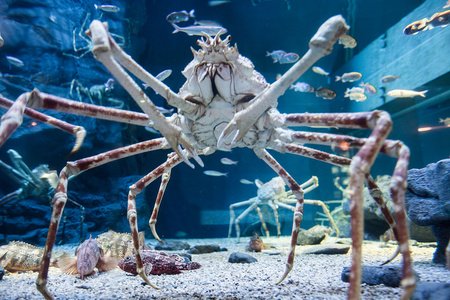

Amphibian- A type of toad
Bird- A type of ostrich